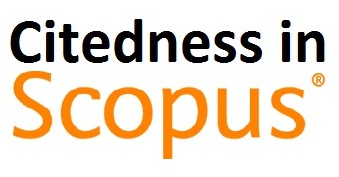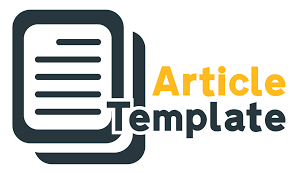Clustering Time Series Using Dynamic Time Warping Distance in Provinces in Indonesia Based on Rice Prices
DOI:
https://doi.org/10.38043/tiers.v4i2.5081Keywords:
Clustering time series, Dynamic time warping, Hierarchical clustering, Rice Prices, IndonesiaAbstract
Rice is a food commodity that is a basic need for Indonesian people. Since the end of 2022, average rice prices in Indonesia have been increasing, breaking the record for the highest price from August to October 2023. The price of rice in each province in Indonesia is different. This can happen because rice center provinces will distribute their rice production to other regions to meet rice needs. The grouping of provinces in Indonesia based on rice prices over time is an interesting thing to research. The analysis method used to group similar objects into groups for time series data is called clustering time series. The distance that can be used to measure the closeness of two-time series is the Dynamic Time Warping (DTW) distance. The clustering analysis used is the single, complete, average, Ward, and median linkage method. The results of the analysis show that time series clustering in provinces in Indonesia based on rice prices is best using median linkage hierarchical clustering. The median linkage method has a cophenetic correlation coefficient value of 0.899064, meaning that clustering using the DTW distance with the median difference is very good. The resulting clusters contained 3 clusters which had different characteristics between the clusters. There are 2 clusters that can be of concern to the government, because there are clusters that have rice prices that have always been high in the last period and there are provincial clusters that have rice prices that are very diverse or can be said to be unstable.
Downloads
References
M. Asaad, "Economic Policies on RiceCommodity and Welfare," Economic Journal of Emerging Markets, vol. 2, no. 1, pp. 13-29, 2010.
E. Siswanto, B. M. Sinaga and Harianto, "Dampak Kebijakan Perberasan pada Pasar Beras dan Kesejahteraan," Jurnal Ilmu Pertanian Indonesia (JIPI), vol. 23, no. 2, pp. 93-100, 2018.
N. McCulloch, "RICE PRICES AND POVERTY IN INDONESIA," Bulletin of Indonesian Economic Studies, vol. 44, no. 1, pp. 45-64, 2008.
S. U. Wijaya and Ngatini, "Pengembangan Pemodelan Harga Beras di Wilayah Indonesia," Limits: Journal of Mathematics and Its Applications, vol. 17, no. 1, pp. 51-66, 2020.
A. S. Ahmar, R. Hidayat, D. Napitupulu, R. Rahim, Y. Sonatha and M. Azmi, "Using K-Means Clustering to Cluster Provinces in Indonesia," in nd International Conference on Statistics, Mathematics, Teaching, and Research , 2018.
M. Ulinnuha, F. M. Afendi and I. M. Sumertajaya, "Study of Clustering Time Series Forecasting Model for," Indonesian Journal of Statistics and Its Applications , vol. 6, no. 1, pp. 50-62, 2022.
M. Z. Rodriguez, C. H. Comin, D. Casanova, D. R. Amancio, M. B. Odemir, L. d. F. Costa and F. A. Rodrigues, "Clustering algorithms: A comparative," PLoS ONE , vol. 14, no. 1, 2019.
S. Rani and G. Sikka, "Recent Techniques of Clustering of Time Series Data: A," International Journal of Computer Applications (, vol. 52, no. 15, 2012.
T. W. Liao, "Clustering of time series dataa survey," Pattern Recognition, vol. 38, p. 1857 1874, 2005.
P. DUrso and E. A. Maharaj, "Autocorrelation-based fuzzy clustering of time series," Fuzzy Sets and Systems, vol. 160, no. 24, pp. 3565-3589, 2009.
Y. Liu, J. Chen, S. Wu, Z. Liu and H. Chao, "Incremental fuzzy C medoids clustering of," PLoS ONE , vol. 13, no. 5, 2018.
L. Liu, W. Li and H. Jia, "Method of Time Series Similarity Measurement Based on Dynamic Time Warping," Tech Science Press , vol. 57, no. 1, pp. 97-106, 2018.
H. Sakoe and S. Chiba, "Dynamic Programming Algorithm Optimization for," IEEE TRANSACTIONS ON ACOUSTICS, SPEECH, AND SIGNAL PROCESSING, Vols. VOL. ASSP-26, no. 1, 1978.
A. A. Mattjik and I. M. Sumertajaya, Sidik Peubah Ganda dengan Menggunakan SAS, Bogor: IPB Press, 2013.
H. Izakian, W. Pedrycz and I. Jamal, "Fuzzy clustering of time series data using dynamic time warping distance," Engineering Applications of Articial Intelligence, vol. 39, p. 235244, 2015.
D. J. Bemdt and J. Clifford, "Using Dynamic Time Warping to Find Patterns in Time Series," Knowledge Discovery in Databases Workshop, pp. 359-370, 1994.
P. R. Carvalho, C. S. Munita and A. L. Lapolli, "Validity studies among hierarchical methods of cluster analysis using cophenetic correlation coefficient," BRAZILIAN JOURNAL OF RADIATION SCIENCES , vol. 7, no. 2, pp. 1-14, 2019.
Iis, I. Yahya, G. N. A. Wibawa, Baharuddin, Ruslan and L. Laome, "PENGGUNAAN KORELASI COPHENETIC UNTUK PEMILIHAN METODE CLUSTER BERHIERARKI PADA MENGELOMPOKKAN KABUPATEN/KOTA BERDASARKAN JENIS PENYAKIT DI PROVINSI SULAWESI TENGGARA TAHUN 2020," in PROSIDING SEMINAR NASIONAL SAINS DAN TERAPAN , Manado, 2010.
S. Azri, U. Ujang and A. A. Rahman, "DENDROGRAM CLUSTERING FOR 3D DATA ANALYTICS IN SMART CITY," The International Archives of the Photogrammetry, Remote Sensing and Spatial Information Sciences, vol. XLII, no. 4, pp. 247-253, 2018.
H. EZANKOV, "DIFFERENT APPROACHES TO THE SILHOUETTE COEFFICIENT CALCULATION IN CLUSTER EVALUATION," in DIFFERENT APPROACHES TO THE SILHOUETTE COEFFICIENT, Kutn Hora,, 2018.
Y. Rahkmawati, I. M. Sumertajaya and M. N. Aidi, "Evaluation of Accuracy in Identification of ARIMA Models Based on Model Selection Criteria for Inflation Forecasting with the TSClust Approach," International Journal of Scientific and Research Publications, vol. 9, no. 9, pp. 439-443, 2019.
Downloads
Published
How to Cite
Issue
Section
License
Copyright (c) 2023 Yeni Rahkmawati, Selvi Annisa

This work is licensed under a Creative Commons Attribution-ShareAlike 4.0 International License.





















